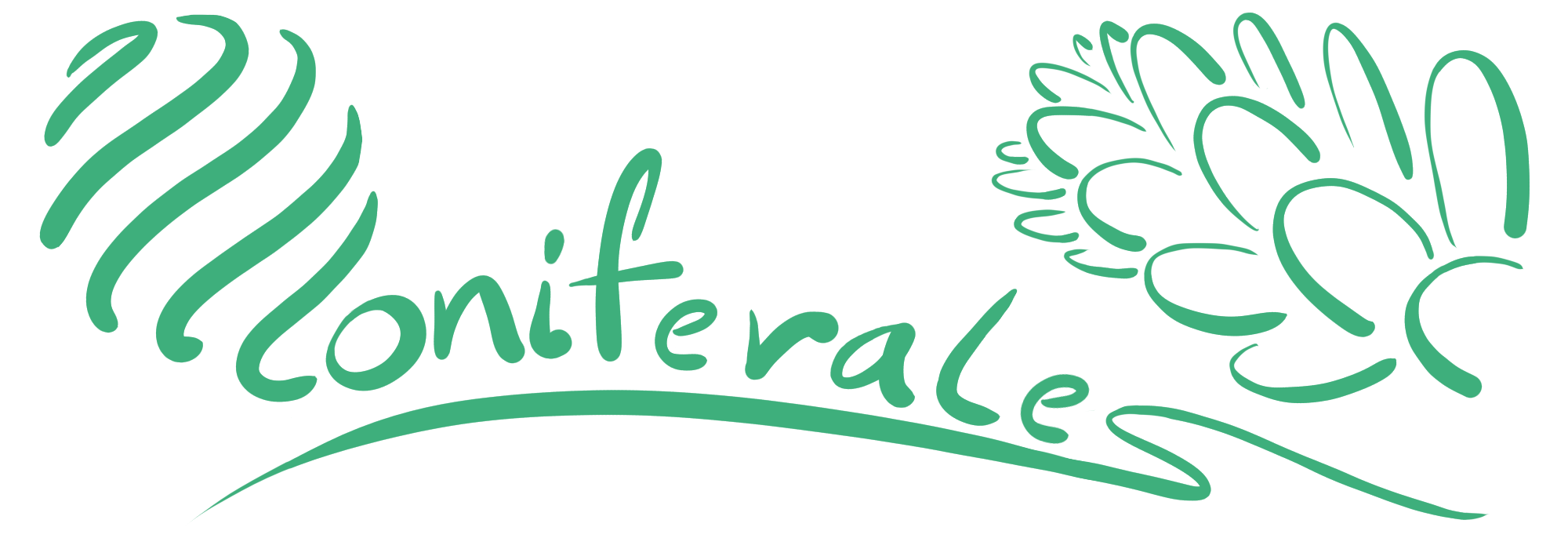Pinaceae Abies sibirica ssp. semenovii (B.Fedtsch.) Farjon
Etymology
Abies refers to ‘to rise’; indicating large trees.
sachalinensis refers to the Russian Island of Sakhalin.
semenovii refers to the Russian geographer P. Semenov.
Colloquial Name
Semenov’s fir
Description
These trees grow between 35 and 40 meters tall, with a trunk up to one meter in diameter. The trunk is straight and cylindrical, supporting a narrow, pyramidal, or conical crown. Young trees have smooth grey or grey-brown bark with many resin-filled blisters. As they mature, the bark breaks into plates.
The main branches are short and slender, spreading horizontally, with the lower ones drooping. The smaller branches grow densely, either spreading outward or angling slightly upward. The twigs are thin and firm, prominently ridged and grooved, and range in color from yellowish brown to grey over time. Small, circular leaf scars remain where old leaves have fallen.
The buds are small, rounded, and about 2 to 3 mm long, with a slight coating of resin. Their protective scales are reddish or yellowish-brown and remain on the tree for several years. The leaves grow in a spiral pattern along the branches. The upper leaves lean forward, covering the shoot, while the lower ones spread out in two rows. On cone-bearing branches, all the leaves angle slightly upward. They are 1.5 to 3 cm long and 1.3 to 1.6 mm wide, with a base that is often slightly twisted or curved. The leaves are long and narrow with a flat surface, light green on top, and have two greyish-green bands underneath. Inside each leaf, small resin ducts run near the edges. Their tips vary from slightly notched to blunt or pointed, sometimes with a hardened tip on cone-bearing branches. Tiny pores called stomata are sometimes present near the tip on the upper surface, while on the underside, they form two narrow bands separated by a midrib.
Pollen cones grow in dense clusters on the underside of shoots. They are about 1.5 cm long, yellow, and have red pollen-producing structures. The seed cones grow laterally and stand upright on the branches. They are almost stalkless, with an oval to cylindrical shape and a blunt tip. When fully grown but not yet dry, they are yellowish brown. The cone’s central stalk remains after the seeds are released, forming a narrow, dark brownish-purple structure.
The seed scales are broad and fan-shaped, becoming more wedge-like toward the upper part of the cone. Each scale is smooth, slightly hairy, and about 1.5 to 1.7 cm long and 2 to 2.2 cm wide. The upper edge is either smooth or slightly jagged, while the base is attached to a short stalk. The bracts, small leaf-like structures beneath the seed scales, are short, rounded, and have a tiny pointed tip but remain hidden within the cone.
The seeds are oblong and wedge-shaped, measuring about 5 to 6 mm in length, and are brown in color. Each seed has a light brown, elongated wing, about 10 to 12 mm long, that helps it disperse in the wind.
Subordinate Taxa
There exist 2 subordinate taxa for Abies sibirica:
Distribution
This map shows botanical records (points) for this taxon. By opening the map’s sidebar (collapsed by default) you can toggle visibility or change the basemap. By clicking on records, you reveal more information.
Habitat
The natural habitats for Abies sibirica ssp. semenovii are boreal forests. It is naturally found at an elevation of at least 1300 up to 2850 metres. There are no conifers associated with Abies sibirica ssp. semenovii that are known of.
USDA Hardiness zone – 1
Abies sibirica ssp. semenovii is hardy to USDA Zone 1 (Bannister & Neuner, 2001), meaning its frost tolerance lies somewhere in the range of -51.1C (-60F) to -45.6C (-50F).
Species Continuity
The population trend for Abies sibirica ssp. semenovii is unknown. There are ongoing threats for Abies sibirica ssp. semenovii and they are listed as follows:
IUCN Category – LC
According to the IUCN Red List, Abies sibirica ssp. semenovii has been assigned the status of LC(Least Concern). This means that according to the Red List criteria, this species is not qualified as threatened.
Superordinate Taxa
The nearest superordinate taxon for Abies sibirica is Subsect. Laterales. The coordinate taxa for Abies sibirica are therefore:
Abies sibirica ssp. semenovii is further placed under Abietoideae. Abies sibirica ssp. semenovii is also placed under Pinaceae.
This map shows botanical records (points) for this taxon. By opening the map’s sidebar (collapsed by default) you can toggle visibility or change the basemap. By clicking on records, you reveal more information.



Reviews
There are no reviews yet.